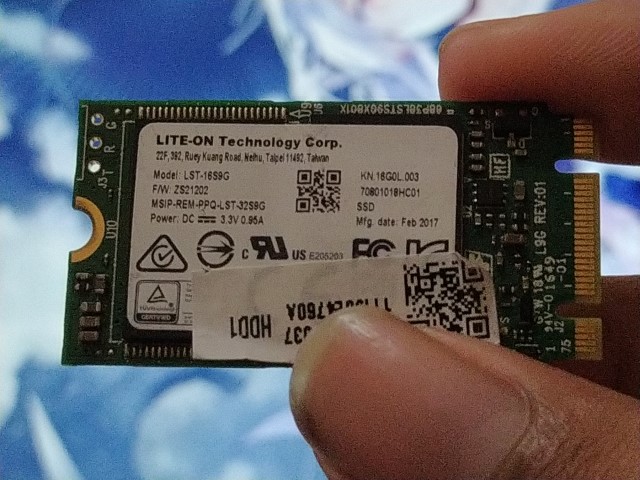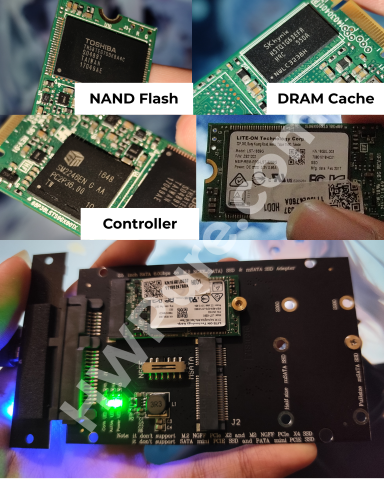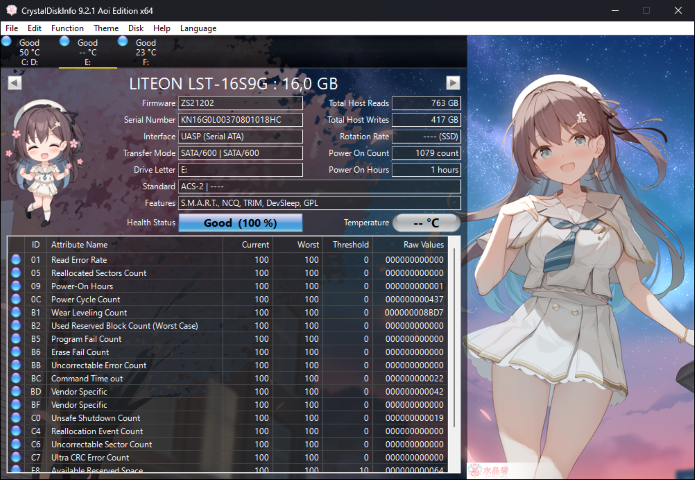Comparing: OPPO A15s eMMC 5.1 vs LITE-ON LST-16S9G 16GB
In this comparison, we analyze two Disks: OPPO A15s eMMC 5.1 and LITE-ON LST-16S9G 16GB, using synthetic benchmark tests to evaluate their overall performance. This side-by-side comparison helps users understand which hardware delivers better value, speed, and efficiency based on standardized testing. Whether you're building a new system or upgrading an existing one, this benchmark-driven evaluation offers valuable insights to guide your decision.

OPPO A15s eMMC 5.1
| Type: | Disks |
|---|---|
| Model: | OPPO A15s eMMC 5.1 |
| Capacity: | 64GB |
| Interface: | eMMC |

LITE-ON LST-16S9G 16GB
| Type: | Disks |
|---|---|
| Model: | LITE-ON LST-16S9G 16GB |
| Capacity: | 16GB |
| Interface: | SATA-III 6Gbps |
Specification Comparison Table
This specification comparison presents technical details of several devices or components to help you understand the key differences between each option. Use this table as a reference to determine which device best suits your needs.
| Specification | OPPO A15s eMMC 5.1 | LITE-ON LST-16S9G 16GB |
|---|---|---|
| Brand | - | LITE-ON |
| Format | eMMC 5.1 | SSD M.2 SATA 2242 |
| Capacity | 64GB | 16GB |
| Interface | eMMC | SATA-III 6Gbps |
Submission Comparison Table
This submission comparison table displays the number and details of benchmark data submissions from various devices or components. This information helps you understand the performance based on the benchmarks that have been tested, as well as providing an overview of the consistency and popularity of the available benchmark results.
Submission Comparison Chart
This chart visualizes the benchmark scores comparison between two hardware devices based on submitted data.
Media Gallery
A collection of photos of tested hardware. These images can help you identify the physical form, model, and variant of the hardware in question. These photos are from our own documentation, and if they are not available we may not be able to document them.
About Hardware OPPO A15s eMMC 5.1
OPPO A15s eMMC 5.1 is the eMMC (embedded MultiMediaCard) version 5.1-based internal storage chip used in the OPPO A15s smartphone. The eMMC 5.1 technology is a significant upgrade from the previous generation, delivering faster read/write speeds, better power efficiency, and improved performance in data input/output management. While not as fast as the more modern UFS (Universal Flash Storage) technology, eMMC 5.1 remains a reliable storage standard for entry-level to mid-range smartphones.
This storage is designed to provide a seamless user experience, from opening apps, saving files, recording videos, to managing Android system data. It also plays an important role in operating system stability, lightweight multitasking, and response time when the device starts up or switches between apps.
The tests were conducted on an OPPO A15s device with MediaTek Helio P35 (MT6765) specifications, 4GB RAM, and 64GB internal storage, running on Android 10 operating system with ColorOS 7.2 interface. The test was conducted when the device had been in use for approximately two years, so the performance results may be slightly affected by NAND Flash performance degradation over time (wear leveling).
In a benchmark using the Cross Platform Disk Test (Mobile), the eMMC 5.1 on the OPPO A15s recorded a read speed of 145.27 MB/s and a write speed of 50.09 MB/s. This indicates that the storage performance is still solid enough for daily needs such as opening social media, streaming videos, accessing galleries, and saving files from third-party applications.
Overall, the eMMC 5.1 on the OPPO A15s is a well-balanced internal storage solution between price, efficiency, and performance, perfect for users who need a smartphone with responsive capabilities while remaining power efficient. For casual users, this performance is more than enough to run most popular Android apps without a hitch.
Device test (testbed):
Device: OPPO A15s
CPU: MediaTek MT6765 Helio P35
RAM: 4GB
Storage: 64GB
OS: Android 10, ColorOS 7.2
* This hardware test was conducted after the device was approximately 2 years old, there may be some performance degradation.
Tuesday, 06 April 2021 13:51:49 | Update: 3 weeks ago
About Hardware LITE-ON LST-16S9G 16GB
The LITE-ON LST-16S9G 16GB M.2 SATA is a compact solid-state drive designed to meet the storage needs of devices with limited space, such as mini PCs, older laptops, or embedded systems. With an M.2 2242 form factor and a SATA III 6Gbps interface, this SSD delivers sufficient performance for basic needs, particularly as a boot drive or operating system medium. Despite its 16GB capacity, its internal components are of decent quality for an entry-level class.
This SSD uses the TOSHIBA TH58TEG7DDK8A4C NAND flash chip, known for its durability and stability, combined with SK hynix's DRAM cache (H5TQ1G63EFR) featuring 1GB DDR3 SDRAM specifications—a rare find in SSDs of its class. The use of the Silicon Motion SM2246EN controller adds further value, as it is widely recognized in the SSD world as a reliable and efficient controller for handling light to moderate read/write tasks. This combination makes the LITE-ON LST-16S9G sufficiently capable for tasks such as booting, running a lightweight OS, or storing system configurations.
Performance testing was conducted on a Lenovo IdeaPad Slim 3i 14ITL6 device with 12GB DDR4 dual-channel RAM and the Windows 11 22H2 operating system. The SSD was installed via an M.2 SATA-to-SATA adapter and connected via a USB 3.0 enclosure. Test results showed sequential read speeds of 280MB/s and write speeds of 45MB/s on the CrystalDiskMark benchmark, while AS SSD recorded read speeds of 279MB/s and write speeds of approximately 41.67MB/s. This performance is stable and consistent with the characteristics of a SATA SSD in the low-capacity class, although the write speed is relatively slow for large file transfers.
Despite its limitations, such as limited storage capacity and low write speeds, the LITE-ON LST-16S9G remains an attractive option for users needing a small SSD for specific purposes. It is suitable for use in lightweight operating systems like Linux, custom devices like routers or media players, and as an upgrade solution from an HDD in older systems that only require improved boot speeds and basic application responsiveness. With its generally affordable price and high-quality internal components, this SSD can be a cost-effective yet functional alternative in the world of digital storage.
Device Test (testbed) :
Adapter: M.2 SATA to SATA -> SATA to USB 3.0 (HDD Enclosure)
Device: Lenovo IdeaPad Slim 3i 14ITL6
CPU: i5-1135G7
RAM: 12GB DDR4 3200MHz Dual Channel (8+4)
OS: Windows 11 22H2
* I have tested this hardware in used condition, so its performance may have deteriorated.
Monday, 30 June 2025 20:45:05 | Update: 2 weeks ago


